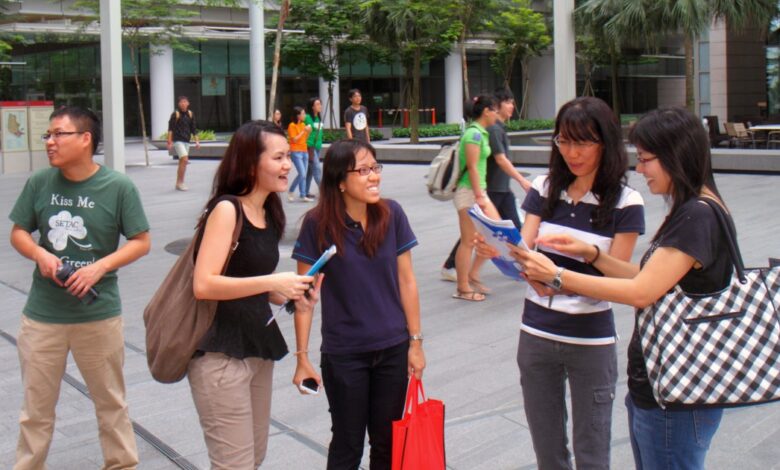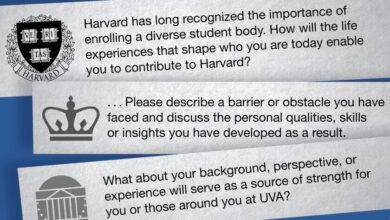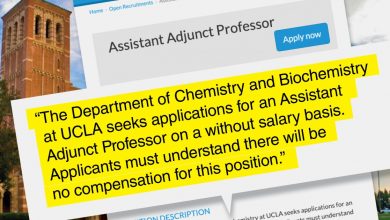A ‘Flabbergasting’ Decision

Everyone should attend a virtual town hall the next morning, it said; classes would be canceled all day. The cryptic message had everyone fearing the worst.
And for good reason: The next morning, at 9 a.m. in Singapore, 9 p.m. Thursday back in New Haven, administrators from Yale-NUS and its parent institutions said they would end the high-profile college in 2025, little more than a decade after it enrolled its first class. Current freshmen will be its last graduates.
“It blew my mind,” said Robin Zheng, an assistant professor of humanities at Yale-NUS. “It was just staggering.”
Although the announcement was made jointly, it quickly emerged that the decision was anything but. Pericles Lewis, Yale’s vice president for global strategy and Yale-NUS’s inaugural president, called the closure “bittersweet.” “We would have liked nothing better than to continue its development,” Yale’s president, Peter Salovey, said in a statement. Tan Tai Yong, Yale-NUS’s current president, told The Octant, the student newspaper, that he was not part of the decision making and that he was “gobsmacked” and “flabbergasted” by the news.
For their part, the National University of Singapore’s leaders have cast the move positively. This isn’t the end of Yale-NUS, they have said, but an opportunity to take the liberal-arts learning it advanced to greater numbers of Singaporean students by merging it into a new honors college at the university. The New College will carry the “rich history” of Yale-NUS, NUS’s president, Tan Eng Chye, said in response to Chronicle questions, while providing “broader access and inclusiveness for students across NUS to be exposed to and benefit from a broad-based, interdisciplinary education.”
Finances were also an issue. Singapore’s government has subsidized Yale-NUS in its start-up phase, but by 2030, the college was expected to draw its operating budget equally from tuition, government support, and endowment funds, according to a provision in the partnership agreement between Yale and NUS. Its fund raising so far, however, left the college short of financial self-sufficiency.
In the three weeks since the announcement, Yale officials have been careful not to challenge or criticize NUS’s withdrawal. “Universities and university leaders have different visions of where they want to go strategically,” Lewis said. “It’s ultimately not for me to tell Singaporeans how they want to run their educational system.”
The ending of the partnership doesn’t “lessen the success of the project itself,” he added.
But the abrupt and unexpected conclusion to one of the most prominent international academic collaborations in recent years, with its bold goal of reimagining liberal-arts education for Asia and the world, invites, even demands, scrutiny. As colleges re-engage globally after a period of Covid-enforced dormancy, they will look for lessons from the dissolution of the Yale-NUS partnership.
If international work is the marriage of two cultures, both academic and national, parent universities must maintain a healthy relationship to nurture the child their collaboration produces. Did Singapore simply outgrow the agreement, or was there a mismatch of expectations from the start? Does this represent a retreat from the liberal arts, or an evolution into something more homegrown?
And, of course, if one can say “thanks, and so long” to Yale, one of biggest stars in the higher-education firmament, what does this mean for other American colleges and their global ambitions?
Top administrators spent two years shuttling back and forth between New Haven and Singapore, hammering out a deal for the new college, which was announced in March 2011. That agreement has never been made public, but both sides say it contained an exit clause, giving either university the opportunity to review and end the partnership in 2025 with at least a year’s notice.
Levin, who serves on the governing board for Yale-NUS, said in a recent interview that the provision could be invoked unilaterally. “I can’t imagine an agreement that required both sides to withdraw would be workable,” said Levin, who called himself “enormously disappointed” by the decision to close Yale-NUS.
Many observers considered Yale the partner more likely to exercise the opt-out. The project was controversial from the start among Yale faculty members and alumni. Some objected to the Singaporean government’s record on civil and political rights; others worried that putting the Yale name on a faraway institution could dilute or even harm the university’s brand. The arts and sciences faculty passed a resolution expressing “concern” about Yale’s role in the new college.
But among Yale-NUS faculty members, there was always worry that the college’s future could be imperiled by either side. Those concerns were heightened when last year NUS said it was forming a new college of sciences and humanities; some professors worried that Yale-NUS could be seen as duplicative or in competition with its work, said Zheng, the humanities professor.
There’s also a matter of Singapore’s history. The island nation has made early exits from other international projects, including with such high-profile partners as Johns Hopkins and New York Universities and Australia’s University of New South Wales. Often, these closures have come because local demand to enroll has not met expectations, making them financially untenable.
“If you were aware of what has happened in the past 20 years,” said Janice R. Bellace, a professor at the University of Pennsylvania’s Wharton School, “what has occurred with Yale-NUS would not be unexpected.”
But Yale-NUS would not seem to fit that mode: It accepts just 6 percent of applicants. Almost all of its graduates land jobs, and many go on to study for advanced degrees at the world’s top universities, including Oxford, Stanford, and Yale itself.
On the surface, at least, there were few signs anything was amiss prior to the late-August announcement. A review of the entire common curriculum had recently been completed. A new dean of the faculty, David Post, a professor of ecology and evolutionary biology at Yale, had assumed his role on July 1. New faculty members had been hired for the 2021 academic year, and incoming first-year students had begun their studies just weeks earlier.
Behind the scenes, however, Yale-NUS’s fate had been decided. Tan Eng Chye, the NUS president, said during the town hall that he had notified Singapore’s Ministry of Education of the closure in June. Yale administrators were told around the July 4 holiday.
In an email to the Chronicle, Tan did not respond to questions about how long the plans had been under review. But, he said, the decision was “a very considered one.”
As a liberal-arts college, Yale-NUS boasts small classes, with a faculty-student ratio of just 8 to 1, half that of NUS. As a result, Yale-NUS was simply more expensive to run than other Singaporean universities.
During a parliamentary debate about Yale-NUS’s future on Monday, Chan Chun Sing, Singapore’s education minister, said it cost, on average, about twice as much to educate a Yale-NUS student as it did for a humanities and science student at NUS — and tuition at Yale-NUS was also twice as expensive.
Last year, the government spent $48 million in Singapore dollars, or about $36 million American, for Yale-NUS’s operating costs, in addition to funds that went to capital needs and to seed the endowment, Chan said. Unlike Tan, he said the costs had not been unexpected. “We accepted this because we saw value in having a liberal-arts college in our tertiary education system,” he told lawmakers.
But both men agreed that Yale-NUS’s fund raising had fallen short of projections. So far, the institution has raised about $60 million in U.S. dollars, or about a quarter of its fund-raising target, barely enough to cover one year’s operating expenses. Even with government matching funds, it was behind.
In planning for Yale-NUS, Singapore officials had cited the endowments of top private American liberal-arts colleges like Williams and Amherst as models. But was it realistic to expect that a college with only four classes of graduates could match the fund-raising might of institutions that had been around two centuries or more? Endowment growth was also hampered because both Yale and NUS left Yale-NUS to fund raise on its own, rather than dedicating any significant resources or sharing their donor lists.
That hands-off approach was about to change, Levin, the former Yale president, suggested to the Yale Daily News. It would have required only a small portion of what Yale raises in a year to close the fund-raising gap, he told The Chronicle. And both he and Lewis pointed out that Yale-NUS still had nearly a decade to reach full sustainability.
In fact, throughout the spring, Yale and NUS had been discussing potential paths toward greater financial stability and solvency, Lewis said, including increasing enrollment beyond the current student body of 1,000. He said he did not think financial concerns drove the decision to pull back from the partnership.
Chan, too, called costs an “important consideration” but not the “main motivation.”
But Shaffique Adam, an associate professor of science who was one of Yale-NUS’s original hires, said the financial issues made the college vulnerable. “If we had been self-sufficient, then Yale-NUS priorities would have prevailed,” he said. “Instead, NUS decided that there were other priorities that were more important to them.”
While the agreement permitted either side to opt out, NUS and the Singaporean government had additional leverage in the partnership because they were covering Yale-NUS’s costs, said Kris Olds, a professor at the University of Wisconsin at Madison who studies the globalization of higher education. They had “serious skin in the game.”
Can a partnership be truly equal when one side is directly bankrolling the project? asked Olds, who previously taught in Singapore. “You can’t build a lot of autonomy into a contract when you haven’t truly invested.”
“Given the costliness, speed, and sheer unilateral nature of the shutdown, the only convincing explanation would be that of a political impetus underlying this decision,” Haolie Jiang, a 2021 Yale-NUS graduate and a co-founder of Community for Advocacy and Political Education, or CAPE, a student-run group focused on building civic literacy, said in an email.
Linda Lim, who helped start a group of Singaporean academics known as Academia | SG and is a professor emerita at the University of Michigan at Ann Arbor, said the qualities nurtured by a liberal-arts education, like critical thinking and questioning assumptions, propelled students such as Jiang to become activists and leaders beyond campus, helping shape debates on issues including climate change and gender.
That change wasn’t always welcome in Singapore, Lim, a Yale alumna, said. “Yale-NUS is a bubble. The same things that were seen as positives by Yale were seen as negatives by government bureaucrats.”
But others argue that politics of another sort were at play in the decision, the inside-baseball of universities. The closure of Yale-NUS is part of a broader restructuring at NUS, which began nearly a year ago with the creation of the humanities and sciences college.
As an autonomous college — with its own president and board, curriculum and faculty — Yale-NUS was both part of and outside NUS. “From the get-go, there were concerns about the structure and relationship” between the two institutions, said Neil Clarke, an associate professor of science at Yale-NUS. “It’s the nature of the setup.”
The merger into the New College will erase those distinctions. Faculty members — Yale and NUS have said Yale-NUS faculty and staff members will not lose their jobs — will be dispersed to various NUS departments. The honors college will have its own, yet-to-be-determined curriculum, one that Tan Eng Chye, the NUS president, has said should be built on the foundation of Yale-NUS’s interdisciplinary work.
But Clarke said the decision reflects a misunderstanding of the nature and impact of liberal-arts education. It’s not just about taking classes across a number of disciplines but about the integration of learning, a student focus, and a residential-college experience — a whole package that leads to versatile, critical thinkers.
“I do think he sees us as redundant,” he said of Tan.
Still, the move is not without precedent in Singapore, which has had a strategy of bringing in international partners to help develop and diversify its higher-ed capacity since the 1990s.

Gabriel Hawawini, a former dean of Insead, the global business school, which has a campus in Singapore, said foreign partnerships allow the country to get projects off the ground quickly. In addition to Yale-NUS, Singapore currently has medical schools in partnership with Duke University and Imperial College London and collaboratively operates the Singapore-MIT Alliance for Research and Technology.
When a program works, said Hawawini, who has studied the internationalization of higher education, it’s natural for the parent institution to want to integrate some of the lessons learned. “These programs either fail and die away or are successful and integrate.”
Still, while Yale officials have said they did not expect the university’s involvement in Yale-NUS would be open ended, they did not foresee the conclusion coming so soon. Levin said he always anticipated that if the partnership ended, Yale would leave behind the college it had helped build.
Chan, the education minister, said that partnerships with foreign universities “evolve and mature” and some come to a “natural end.”
“We must find our own unique value propositions,” he said. “We cannot and should not be be a clone of others, no matter how successful they may be.”
This new approach to the liberal arts will not just be of Singapore, it will be for Singaporeans. Forty percent of Yale-NUS’s current student body comes from outside of Singapore, a percentage that has at times crept even higher. The balance of international students at New College has not yet been decided, but Chan said it was likely to be closer to the proportion at NUS, about 10 percent.
While Singapore previously positioned itself as a global-education hub, it has increasingly taken a more nationalistic approach to education, said Bryan Penprase, vice president for sponsored research and external academic relations at Soka University of America. That means prioritizing the education of its own citizens, said Penprase, who wrote about such trends in Neo-Nationalism and Universities: Populists, Autocrats, and the Future of Higher Education. (This reporter contributed a chapter on China to the book, published by Johns Hopkins University Press.)
In an era of “Singapore first,” Penprase said, a Singapore-oriented program may be more appealing.
Inevitably, some of that skepticism has seeped into international education. Where colleges once eagerly sought partnerships around the globe, they may now be taking a more cautious and tentative approach. In hindsight, Yale-NUS may have been possible because it was born at just the right time, a golden era for internationalization.
If global academic collaboration endures — and most educators believe it will — the nature of international engagement is likely to change. In decades past, as with Yale-NUS, it was about western universities going abroad to help build up local expertise, what many see as a sort of missionary approach. But now academic quality has risen sharply in places like Singapore; on at least one global university ranking, NUS places higher than Yale.
The dissolution of Yale-NUS offers lessons for universities engaging in overseas partnerships, experts said. They must do careful due diligence up front, asking what each partner brings to the table as well as understanding the local educational, political, and cultural context for the partnership.
American colleges need to ask how working abroad will further their mission and their work, Hawawini said. “The motive to go abroad has to be to learn, not to transfer knowledge. You should want to go abroad because you want to change at home.”
Lewis said Yale-NUS has had an impact on Yale through the more than 200 faculty members who have spent time there. His own teaching has changed, as he has worked Asian texts, such as the writings of Confucius or the Bhagavad Gita, into his syllabi.
But Christopher L. Miller, a professor emeritus of African American studies and French and an early critic of the Yale-NUS partnership, is not so sure it has changed Yale for the better.
He sees it as a black eye for Yale. “Yale looks bad in this,” he said. “It looks suddenly helpless. This ending demonstrates exactly why it was a mistake to enter into the partnership in the first place.”
He hopes Yale and other colleges will think twice before striking partnerships with authoritarian governments, who can act unilaterally and without transparency.
Miller has called on the Faculty of Arts and Sciences Senate to convene a “committee of inquiry” to look into what happened with Yale-NUS and why, but Senate leaders rejected the proposal on Friday, he said.
Though faculty and alumni critics worried that a commitment in Singapore could compromise or shift the focus away from Yale’s home campus, supporters of Yale-NUS wished Yale had been more invested. Olds notes that the Yale-NUS degree is awarded by NUS alone, rather than as a joint or dual degree. The liberal-arts college’s graduates are affiliate members only of the Yale alumni association. While some Yale-NUS faculty members had joint appointments with NUS, there were not similar academic ties with Yale.
“In some ways, all that is happening is removing the Yale name,” Olds said. “It’s losing out on Yale branding.”
Still, several Yale-NUS professors noted that its curriculum was strongly shaped by Yale. Many of the college’s top administrators have come from the Yale ranks, and Yale faculty members have regularly served on Yale-NUS curriculum, search, and tenure and promotion committees.
Now that Yale’s involvement is coming to a close, Miller said the university needs to consider its “moral or even material responsibility” to those at Yale-NUS. Alumni will hold degrees from an institution that no longer exists. While there’s been a pledge to retain jobs, not all faculty members have an obvious academic home within NUS, and departments there may not be interested in researchers with their particular expertise or background. Drawn by the opportunity to teach at a pathbreaking liberal-arts college, many may find themselves back out on a tight job market.
Zheng, the humanities professor, has an answer for Miller: Yale professors and administrators can speak out on behalf of their Yale-NUS colleagues, she said, emphasizing the value of the type of education they sought to create and condemning the way the closure decision was made. “It’s important for U.S. institutions to stand up for the values that brought them there in the first place,” she said.
For all the controversy surrounding the institution’s closure, Zheng and her colleagues said they hope Yale-NUS will be remembered for its innovative, creative, and boundary-pushing approach to the liberal arts.
Adam, the science professor, said that as a young academic he was given unusual resources and responsibility to imagine, then construct, a wholly new college. “While we were building the institution,” he said, “the institution built us.”
Adam compares the college to Silicon Valley start-ups like Netscape, innovators whose influence continues as their alumni go on to play key roles in other companies. Yale-NUS may cease to exist, he said, but it will live on through its graduates and its former faculty.
Source link






